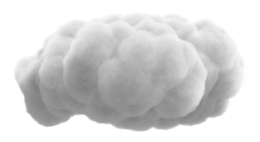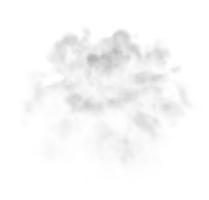In this clouds page you can download free clouds PNG images: clouds PNG images free download
In this gallery of clouds, we have 33 free PNG images with transparent background.
In meteorology, a cloud is an aerosol comprising a visible mass of minute liquid droplets or frozen crystals, both of which are made of water or various chemicals. The droplets or particles are suspended in the atmosphere above the surface of a planetary body. On Earth, clouds are formed by the saturation of air in the homosphere (which includes the troposphere, stratosphere, and mesosphere). The air may be cooled to its dew point by a variety of atmospheric processes or it may gain moisture (usually in the form of water vapor) from an adjacent source. Nephology is the science of clouds which is undertaken in the cloud physics branch of meteorology.
Cloud types in the troposphere, the atmospheric layer closest to Earth's surface, have Latin names due to the universal adaptation of Luke Howard's nomenclature. It was formally proposed in December 1802 and published for the first time the following year. It became the basis of a modern international system that classifies these tropospheric aerosols into five physical forms and three altitude levels or ?tages. These physical types, in approximate ascending order of convective activity, include stratiform sheets, cirriform wisps and patches, stratocumuliform layers (mainly structured as rolls, ripples, and patches), cumuliform heaps and tufts, and very large cumulonimbiform heaps that often show complex structure. The physical forms are cross-classified by altitude levels to produce ten basic genus-types or genera. Some of these basic types are common to more than one form or more than one ?tage, as illustrated in the stratocumuliform and cumuliform columns of the classification table below. Most genera can be divided into species, some of which are common to more than one genus. These can be subdivided into varieties, some of which are common to more than one genus or species.
Cirriform clouds that form higher up in the stratosphere and mesosphere have common names for their main types, but are sub-classified alpha-numerically rather than with the elaborate system of Latin names given to cloud types in the troposphere. They are relatively uncommon and are mostly seen in the polar regions of Earth. Clouds have been observed in the atmospheres of other planets and moons in the Solar System and beyond. However, due to their different temperature characteristics, they are often composed of other substances such as methane, ammonia, and sulfuric acid as well as water.








